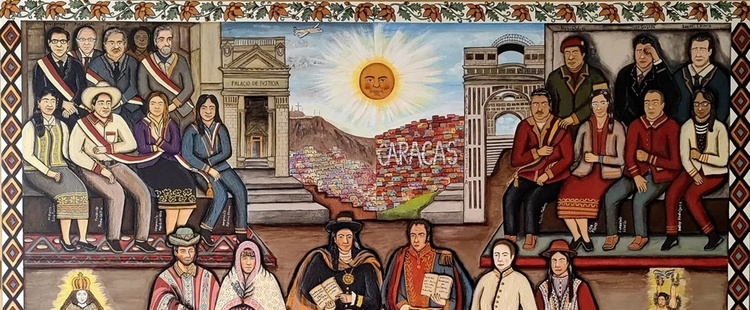
ARTEMANTA HISTORIATA TAPUSPA
VIOLETA QUISPE YUPARI: ARTEMANTA HISTORIATA TAPUSPA
Official history is usually told from the perspective of power groups, which have determined what aspects of the past to show and how to show them, what stories are remembered and who is considered important within these stories. Art has also traditionally served to strengthen these perspectives from a visual perspective. In this context, the stories of indigenous, mestizo and Afro-descendant women and sexual minorities have generally been left aside.
The work of Violeta Quispe Yupari (Lima, 1989) has focused on demanding women's equality and denouncing gender violence, especially against Andean women. From this perspective, some of her works, like those we see in this exhibition, have focused on different historical contexts to highlight the stories and contributions of women in the construction of the Peruvian nation, especially those belonging to marginalized groups in terms of race, class and gender.
Violeta is the daughter of Gaudencia Yupari and Juan Walberto Quispe, two artists originally from the peasant community of Sarhua (Ayacucho). Both migrated to Lima in the 1980s due to the violence of the internal armed conflict that affected Sarhua especially at the beginning of that decade.
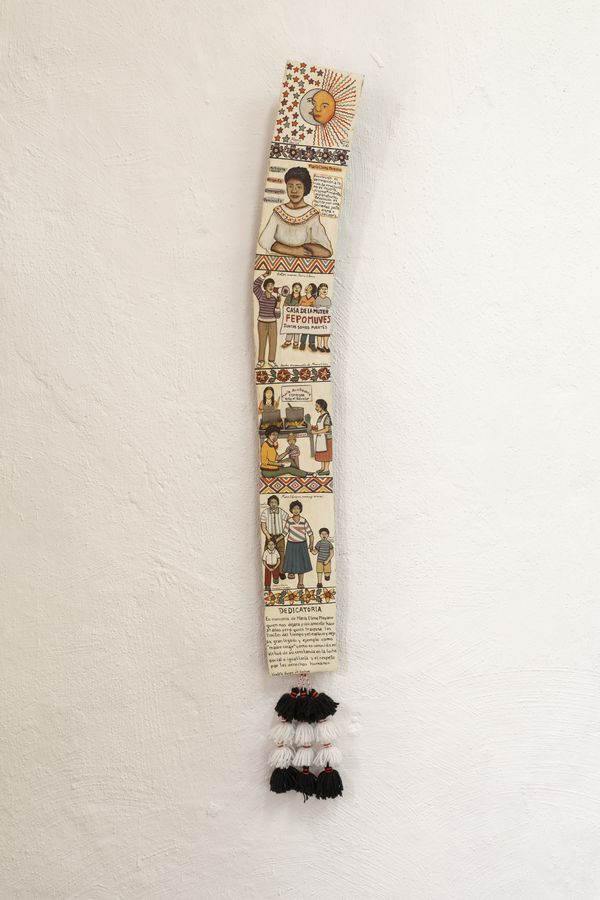
Juan Walberto was a renowned panel painter from Sarhua and Gaudencia is an outstanding textile artist who has also developed an important career as a panel painter. The Sarhua Tablets are paintings on long wooden planks that are made on the occasion of the construction of a new house to record, through images and texts, the close relatives of the owners of the house and the ties of reciprocity. that are established with the compadres who give the Table.
Since the 1960s, due to the economic crisis, many Sarhuinos had to migrate to the large cities of Peru, especially the capital, Lima; and in the 1970s, some of them began to paint a new version of the Tables intended for the urban market. In the new Tables, of rectangular formats, the painters represented traditional scenes of rural life in the community of Sarhua such as festivals and rituals, communal work, agricultural and livestock work, myths and stories.
Since the 1990s, Sarhuino painters also decided to address the social conflicts that afflicted the community and created series in which they addressed topics such as the internal war and the life of migrants in Lima. The first Tables made in Lima were the work of the painters Primitivo Evanán and Víctor Yucra. They were joined shortly after by the young Sarhuinos Juan Walberto Quispe and Julián Ramos.
In 1982, Primitivo Evanán, Juan Walberto Quispe, Bernardino Ramos and Valeriana Vivanco founded the Association of Popular Artists of Sarhua (ADAPS), which continues to this day and has been fundamental for the development of Sarhua painting in Lima.
At first, the ADAPS painters were only men, but when the Board business began to prosper, women also began to paint in the workshop. Painters such as Valeriana Vivanco, Gaudencia Yupari, Norma Quispe, Luisa Romaní, Irene Gómez, among others, join.
Read More..
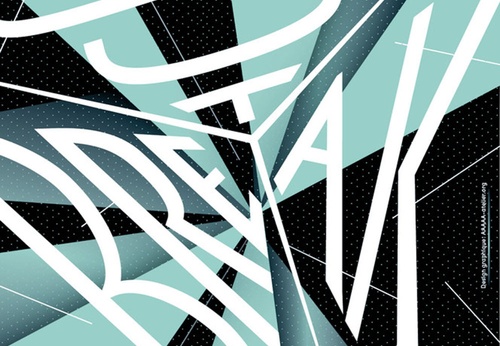


- July 04, 2025
Photography as a Tool for Telling History
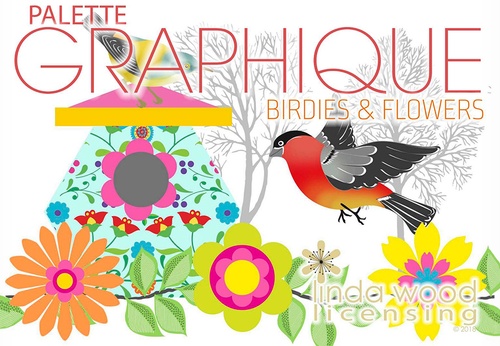
- July 04, 2025
Palette Graphique Birdies and Flowers | Linda Wood
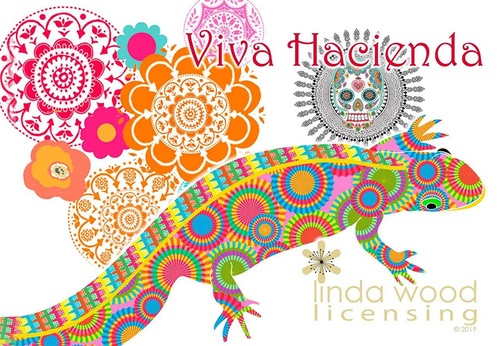
- July 03, 2025
Mexican Inspirations in the Art of Linda Wood
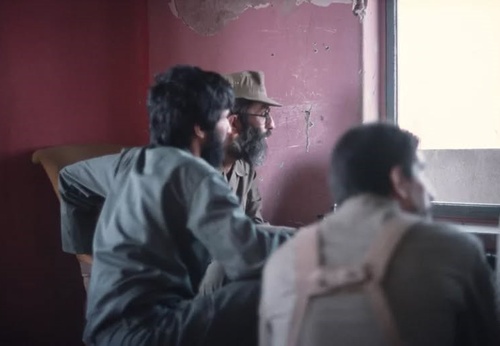

- July 03, 2025
Roman Duszek | Photography
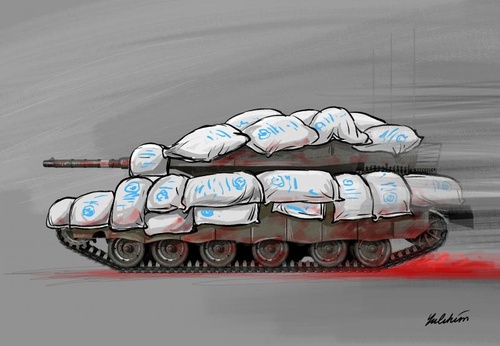
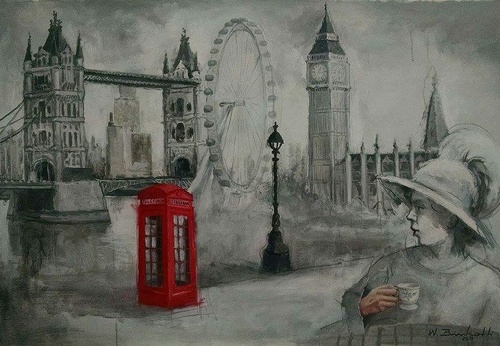
- July 03, 2025
Gallery Of Illustration By Walmir Binhotti - Brazil

- July 02, 2025
Hugo Correa Exhibits at Museo Ralli San…

- July 02, 2025
The Exhibition That Reimagines the Past…

- July 02, 2025
The Major Exhibition "Before America" …

- June 29, 2025
Peruvian painter Gerardo Chávez dies at…

- June 29, 2025
ARCOmadrid 2026 Opens Call for Entries …

- June 29, 2025
José María Velasco: The Landscape Artis…

- June 26, 2025
It houses 40 legacies of Latin American…

- June 18, 2025
Winners of the “Holosaide” event announ…

- June 18, 2025
The Major Exhibition of the Malba Colle…

- June 16, 2025
Pedro Roth Exhibition at the National A…

- June 15, 2025
Malba Pays Tribute to Luis Felipe Noé w…

- June 15, 2025
Contemporary Italian Painting on Displa…

- June 13, 2025
Impacto da Arte Digital na Sociedade

- June 13, 2025
The Geometric Essence of Fanny Sanín on…

- June 12, 2025
Guillermo García-Cruz's 'Divergent Stru…

- June 12, 2025
Book Brasília, the art of democracy wil…

- June 11, 2025
In 2025, SP-Arte Rotas will include nar…

- June 11, 2025
The Barranquilla Museum of Modern Art

- June 10, 2025
Discovery of William Turner's Work

- June 10, 2025
One of the largest art events in Latin …

- October 08, 2023
Illustrations reflect the brutal Israel…

- December 25, 2023
The jury statement of the Iran-Brazil F…

- July 29, 2023
History of Caricature in Brazil

- April 20, 2024
Poignant Image of Grief Wins Mohammed S…

- May 22, 2025
Brady Izquierdo’s Personal Exhibition O…

- September 01, 2023
Neural Filters in new photoshop 2023

- March 21, 2024
The history of art in Palestine

- October 21, 2023
Erick Meyenberg and Tania Ragasol at th…

- March 14, 2024
museum of statue of van gogh

- August 09, 2023
Venezuela mural expresses solidarity wi…

- March 15, 2024
museum of sculpture of Salvador Dali

- March 30, 2024
illustration websites in Latin America

- May 20, 2024
Latin American Festival of Performing A…

- May 25, 2025
Bordalo II to hold exhibition in Paris …

- January 12, 2025
The Ralli Museum in Punta del Este

- July 30, 2024
The artist from San Luis Mirta Celi rep…

- March 18, 2025
Works by Cuban Artist Eduardo Abela in …

- July 03, 2024
Newly discovered rock art in Venezuela

- April 18, 2024
Israel Pavilion at Venice Biennale clos…

- January 04, 2025
Material Art Fair 2025

- February 18, 2024
7 Ways to Understand What Visual Arts A…

- May 15, 2024
Eleven murals for Gaza painted across t…

- October 08, 2023
Illustrations reflect the brutal Israel…

- January 02, 2025
13 commemorations that will mark the cu…

- October 17, 2023
The influence of Latin American artists…

- December 25, 2023
The jury statement of the Iran-Brazil F…

- November 17, 2023
Fernando Botero's work is booming after…

- July 29, 2023
Piracicaba International Humor Exhibiti…

- February 03, 2024
THE HISTORY OF NAIF ART

- November 06, 2023
Heba Zagout: Palestinian artist murdere…

- February 01, 2025
A maior exposição de Botero em Barcelona

- July 02, 2024
One of the largest urban art galleries …

- December 10, 2023
Sliman Mansour and Palestinian art on t…

- July 20, 2024
First International Mail Art Biennial 2…

- September 01, 2023
Neural Filters in new photoshop 2023

- March 14, 2024
museum of statue of van gogh

- October 23, 2023
Controversy over the project that will …

- October 30, 2023
Palestinian turns images of the Gaza co…

- February 06, 2024
Bolivian artists will be at the 2024 Ve…

- February 08, 2024


